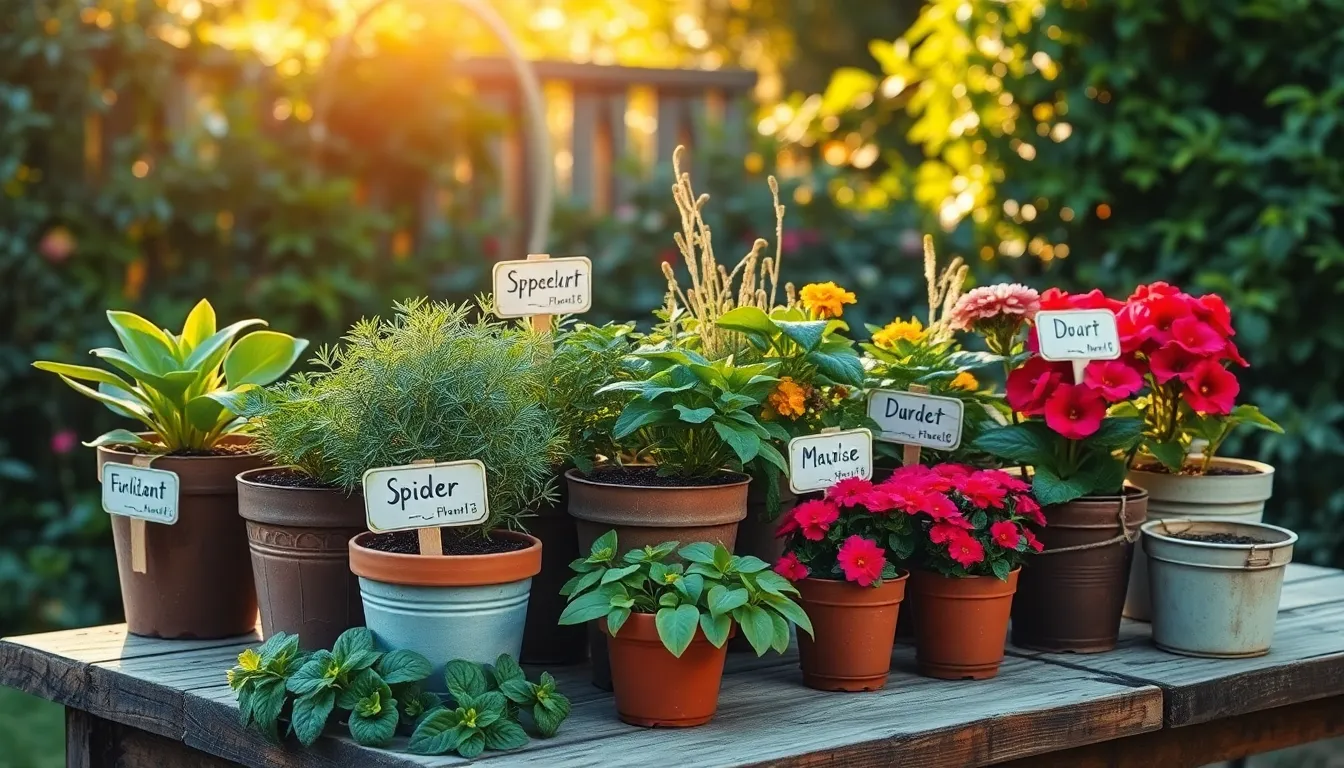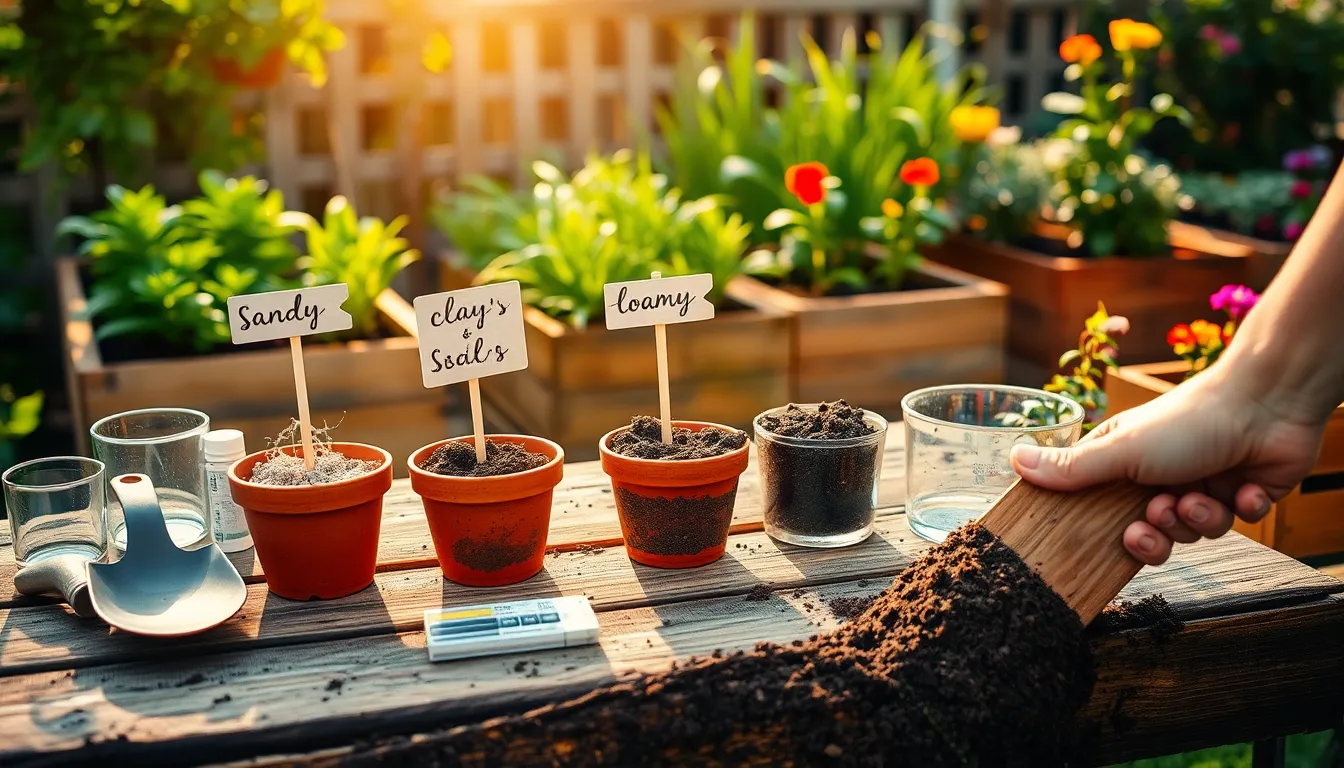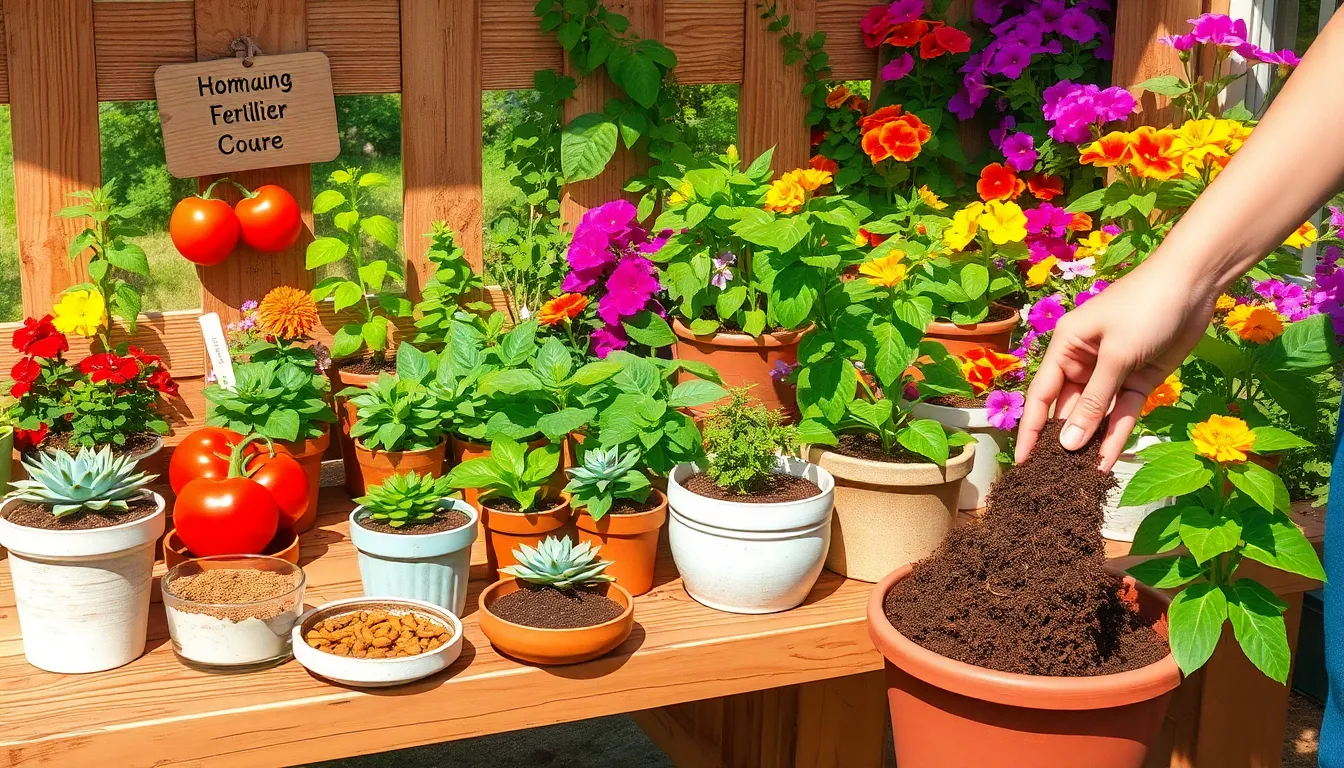Gardening is a journey of nurturing life, where every leaf unfurls into a testament of patience and care. Whether you’re an enthusiastic novice or a seasoned green thumb, understanding how to nourish your plants organically can transform your garden into a haven of health and vitality. Embracing organic fertilization not only enriches your soil but also fosters a sustainable ecosystem that thrives with each passing season.
Exploring the world of organic fertilizers opens up a treasure trove of natural solutions, from compost and manure to bone meal and seaweed extracts. In this article, you’ll discover how to select and apply these organic nutrients effectively, ensuring that your plants receive the balanced diet they deserve. With these insights, you’ll cultivate a garden that’s not only lush and productive but also kind to the earth.
Assess Soil Nutrient Needs
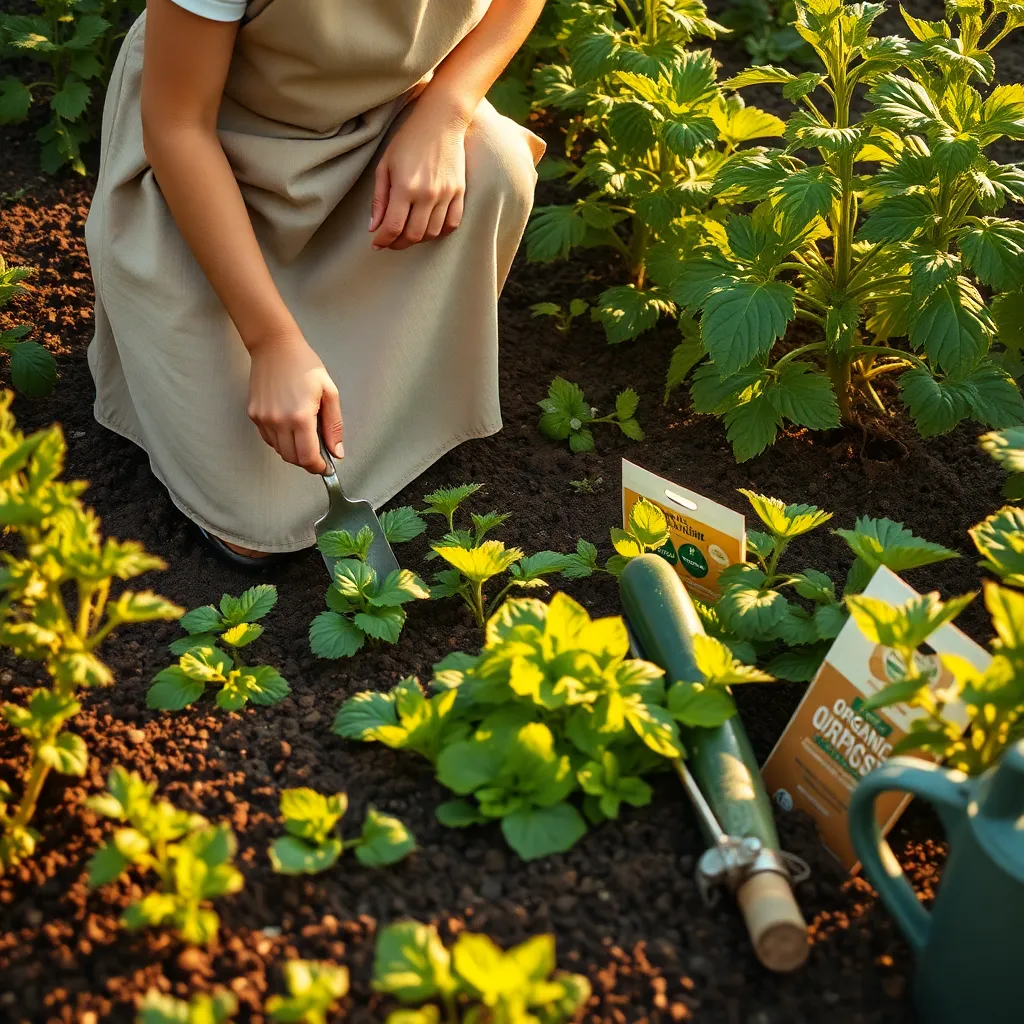
Understanding your soil’s nutrient needs is essential for effective organic fertilization. Begin by conducting a soil test to determine its current nutrient levels and pH balance, which will inform you of any deficiencies or excesses.
Home testing kits are readily available and easy to use, providing insights into the soil’s nitrogen, phosphorus, and potassium levels. Alternatively, for more precise results, consider sending a sample to a professional laboratory for a comprehensive analysis.
Once you have your soil test results, you’ll know which nutrients need to be added. For example, if the test indicates a nitrogen deficiency, you might incorporate organic materials like composted manure or alfalfa meal into your soil.
It’s crucial to understand that different plants have varying nutrient requirements. Vegetables such as tomatoes and peppers thrive in nutrient-rich soils, while native plants often prefer leaner, less disturbed soils.
To maintain nutrient balance, consider rotating crops and using cover crops to naturally replenish soil nutrients. Techniques like these not only improve soil health but also enhance plant resilience and productivity.
For advanced gardeners, experimenting with biochar can be an effective way to improve nutrient retention and boost microbial activity. This technique can significantly enhance soil fertility, especially in sandy or depleted soils.
Select Organic Fertilizer Type
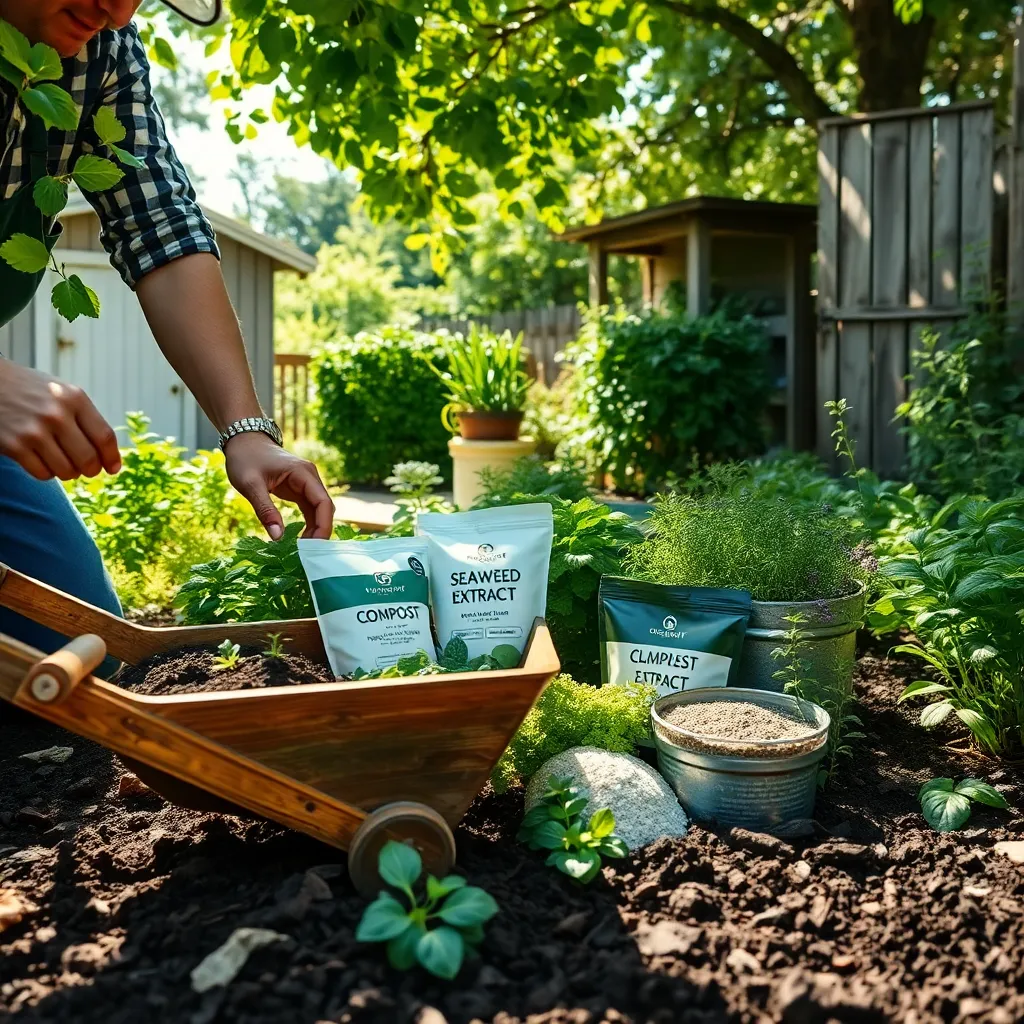
Once you’ve assessed your soil’s nutrient needs, it’s time to select the right organic fertilizer to enrich your garden. Organic fertilizers come in various forms, including compost, manure, bone meal, and fish emulsion, each offering unique benefits to your plants.
For those new to organic gardening, starting with compost or well-aged manure is a great choice. These fertilizers improve soil structure, enhance water retention, and provide a balanced mix of nutrients.
Advanced gardeners might consider using specialized fertilizers like bone meal or blood meal for specific nutrient boosts. Bone meal is rich in phosphorus, promoting strong root development, while blood meal is high in nitrogen, which can help leafy plants thrive.
To ensure your plants receive the nutrients they need, it’s crucial to apply fertilizers according to the specific requirements of your plants. Leafy greens, for instance, benefit from nitrogen-rich fertilizers, while flowering plants might require more phosphorus.
When applying organic fertilizers, always follow the recommended application rates to avoid over-fertilization. Even organic fertilizers can harm plants if used excessively, so aim for a balanced approach based on your soil analysis.
To maximize the benefits of organic fertilizers, consider combining different types. Mixing compost with bone meal, for example, can offer a well-rounded nutrient profile, benefiting a wide range of plants in your garden.
Apply Fertilizer Evenly
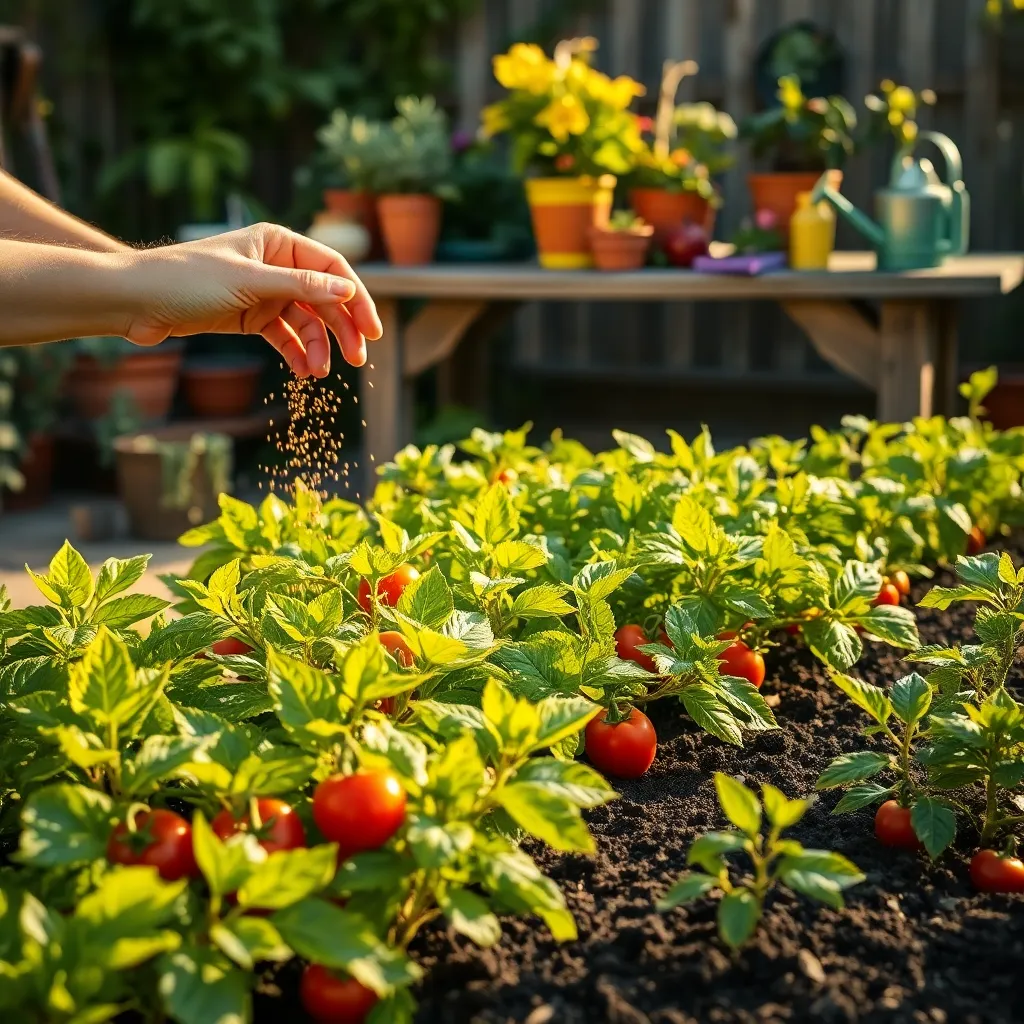
When applying fertilizer, it’s crucial to distribute it evenly across the soil surface. Uneven application can lead to nutrient imbalances, causing some plants to thrive while others suffer.
To achieve uniform coverage, use a handheld spreader for smaller gardens or a broadcast spreader for larger areas. These tools help ensure each plant receives the same amount of nutrients, promoting consistent growth.
Consider the type of soil in your garden when applying fertilizer. Sandy soils may require more frequent applications since they drain quickly, while clay soils hold nutrients longer but need even distribution to avoid clumping.
Water the soil lightly after applying the fertilizer to help it seep into the root zone. This step not only aids nutrient absorption but also prevents the fertilizer from blowing away or being washed off by rain.
Water to Activate Nutrients
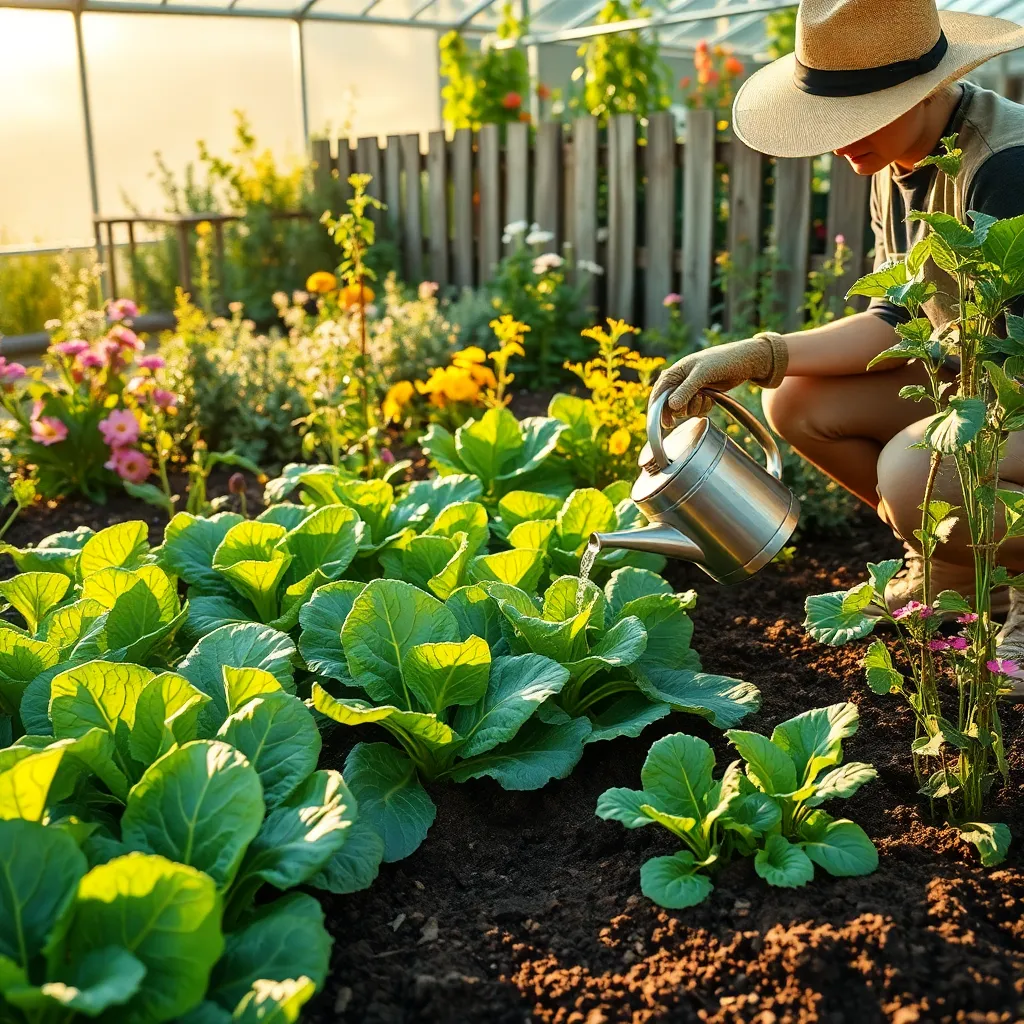
After spreading the organic fertilizer, it’s essential to water your plants thoroughly. This step helps dissolve the nutrients, making them more readily available for plant uptake.
Watering evenly ensures that all areas of the soil receive the nutrients they need. Aim to water until the soil is moist to a depth of about 6 inches, which encourages deep root growth.
For best results, use a gentle spray setting on your hose to avoid washing away the fertilizer. Early morning or late afternoon is the ideal time to water, minimizing evaporation and ensuring the plants absorb maximum moisture.
Beginners should check the soil moisture with their fingers to avoid overwatering. Advanced gardeners might consider a moisture meter for more precise measurements, ensuring the soil maintains a consistent moisture level.
Monitor Plant Growth and Health
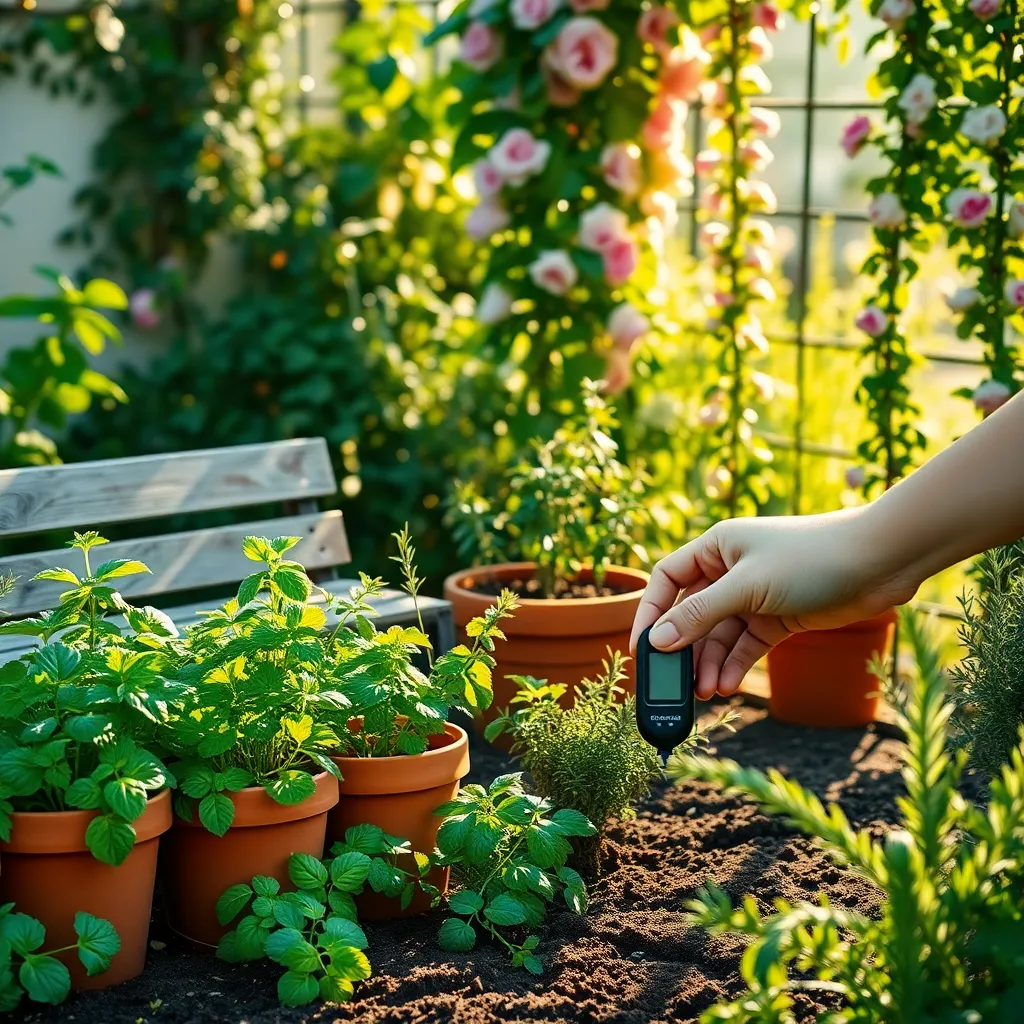
Observing your plants regularly is essential for maintaining their health and promoting optimal growth. Begin by checking the color and texture of the leaves, as these can indicate whether your plants are receiving adequate nutrients.
Make it a habit to examine the soil moisture by sticking your finger an inch deep to ensure it is neither too dry nor too wet. A consistent watering schedule, adjusted for seasonal changes, can help prevent issues like root rot or dehydration.
In addition to monitoring moisture, pay attention to the overall growth pattern of your plants. If you notice stunted growth or wilting, it may be a sign of nutrient deficiency or pest infestation, prompting a need for immediate action.
Advanced gardeners can track growth rates by measuring plant height or leaf size weekly, which can be particularly useful for testing the efficacy of your organic fertilizer regimen. Keep a gardening journal to note any changes or anomalies, which will aid in diagnosing issues early.
To further ensure plant health, examine the undersides of leaves for pests such as aphids or spider mites. Implementing natural pest control methods, like introducing beneficial insects, can help maintain balance and support plant vitality.
Conclusion: Growing Success with These Plants
In our exploration of organic plant fertilization, we unearthed five key relationship concepts crucial for nurturing both gardens and connections with loved ones. First, understanding the unique needs of your plants parallels recognizing the individuality in relationships. Second, the importance of patience and time in allowing growth to flourish both in soil and with loved ones. Third, the role of communication, akin to the dialogue between gardener and garden, fosters a thriving environment. Fourth, adaptability and learning from nature’s cues, much like adapting to relationship dynamics, ensures resilience. Lastly, the joy of sharing the fruits of your labor, reinforcing the bonds that tie us together.
As your next step, consider starting a small herb garden with your partner or family to practice these principles firsthand. This tangible project can serve as a living metaphor for relationship growth and care.
Remember, relationships, like gardens, require ongoing attention and dedication. Bookmark this article as your go-to guide whenever you need a gentle reminder of these nurturing principles. As you cultivate these practices, look forward to a future of blossoming relationships, rich with understanding and mutual growth. Empower yourself to take action today and watch your connections thrive.

